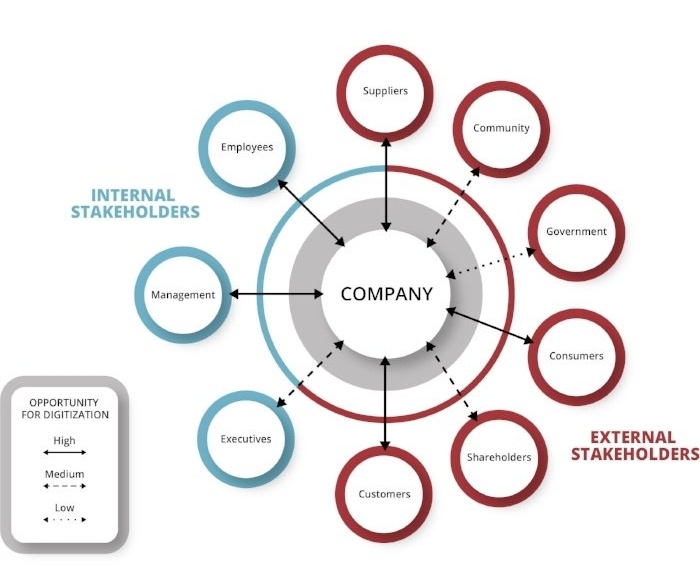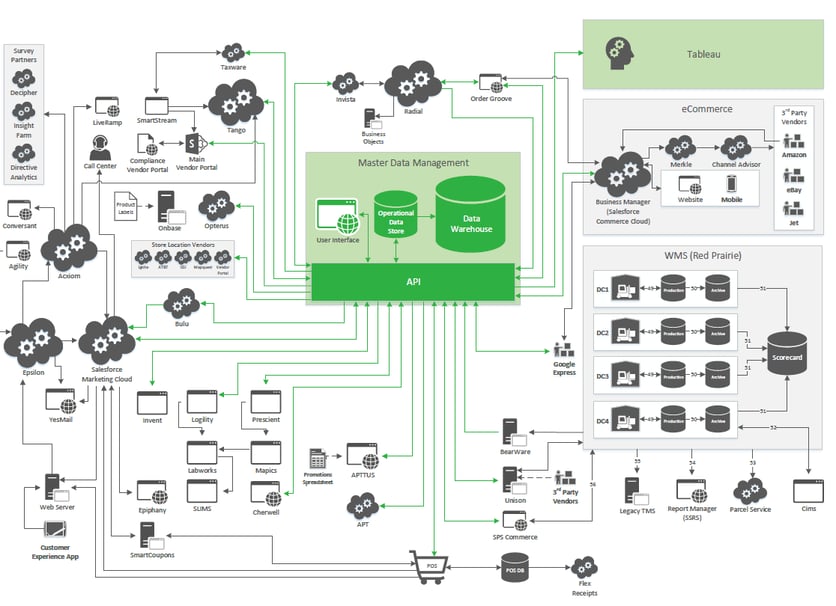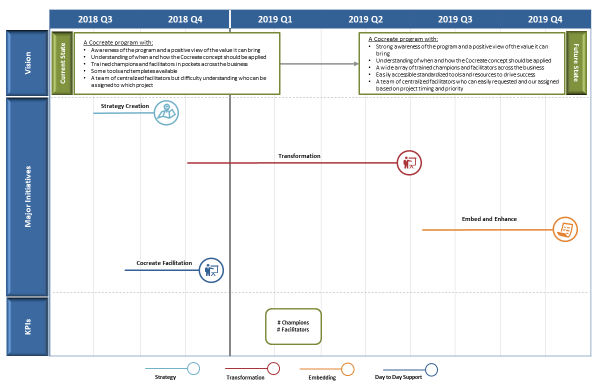October 5, 2018
by Mike McClaine
October 5, 2018
Moving platforms to the cloud can eliminate huge hardware, software, and facility investments.
Platforms as a Service (PaaS) and Software as a Service (SaaS) products create opportunities for quick implementation. Although cost can still be significant, licensing is annual, with much smaller up-front costs. Software can be more easily switched out as new technology and features become available.
Pricing for SaaS solutions is typically user-based and scalable. This gives smaller companies access to similar functionality as larger companies at a much lower price point.
The benefits of modern IT and digital are exciting, and it would be easy to dive right into implementing initiatives. However, to truly create value and avoid missteps, it is critical to first create a comprehensive IT strategy aligned to the business strategy. Using some logical steps, a clear path forward can be developed within a short timeframe.
A clear understanding of where the company is headed from a business standpoint is the absolute key to getting off to the right start. Building strategy with a consumer / customer-centric view has always been important, but in the age of digitization, it is the number one factor for business success.
Start with defining / reminding yourself of the company’s mission and vision and proceeding through the downstream levels of the strategic planning process. This includes goals, objectives (with key measures), strategies, and tactics.
Realistically, all of these strategic elements may not be in place, even at larger companies. For a business-minded CIO or head of IT, helping to solidify the strategic direction may be an opportunity to show how IT can be a broader player in the broader organization.
With the tech strategy in place, the focus moves to digital relationships that drive results. Every stakeholder interaction holds an opportunity for digitalization that could improve customer satisfaction and efficiency.
 Stakeholder Mapping for Digital Connectivity.
Stakeholder Mapping for Digital Connectivity.
Connections should be mapped and defined for the following dimensions:
Diagramming the current environment helps clarify the scope and complexity of stakeholder relationships for IT and business leadership. It should show systems and interfaces, with reference sheets for each that list details such as business purpose, costs, challenges, and departmental ownership.
 Architecture Diagram.
Architecture Diagram.
How can IT strategy support business strategy? Businesses generally have a cross-section of strategies that must be supported by people, process, and technology. Utilizing this strategy as input, IT must go through its own strategic process, once again starting with goals and objectives that will enable business results.
From a communications standpoint, it is helpful to map how each component of the IT strategy supports the business strategy. This will help the IT team understand how their contributions tie to organizational priorities.
Based on the now-established IT strategy, companies should diagram the desired future environment. It should clearly denote deviations from the current state diagram. This detail included in this document can be limited to what is relevant to the changes being proposed for immediate consideration.
Next, individual initiatives must be defined based on IT strategies and future state. For each initiative, define business value, cost, duration, resourcing, dependencies, constraints, and impact to the IT infrastructure. Leaders can use these factors to inform the prioritization and sequencing of initiatives.
Documenting the base architecture and connectivity is often a precursor to initiatives that generate greater enthusiasm and bottom line results. For that reason, it is also important to find quick wins to build momentum and excitement core infrastructure work is in process.
The roadmap shows the final sequencing of initiatives. Modern frameworks involve much more than laying out these projects on a timeline. They often include concepts such as current and future state, connectivity to KPIs, and even PEST (Political, Economic, Social, and Technological factors) impact.

High-Level Timeline.
Planning traditionally ends with the roadmap phase, and following executive alignment, transitions to execution. However, in today’s more agile environment, the roadmap cannot be static. It should be continuously referenced and periodically reevaluated to ensure continuity between the business strategies driving the IT strategy. The roadmap may need to be updated to reflect changes such as prioritization, timing, cost estimates, or results. A quarterly review schedule typically provides enough frequency without becoming a distraction.
Even as companies increasingly depend on technology, their use still needs to be in the context of a proper strategic framework. Successful IT leaders will combine this methodical approach with more agile processes to set their companies up for long term success.
Most mid-sized companies are so focused on working in their business that working on their business (like strategic IT planning) just isn't feasible. Enter Aspirant.
Our Strategy and Digital Transformation experts help clients identify and pursue opportunities for revolutionizing their operations through the adoption of technology. Use the form below to schedule a casual discussion about how we can do the same for your company.
Any questions or feedback?
We'd love to hear from you.
Let's Connect!